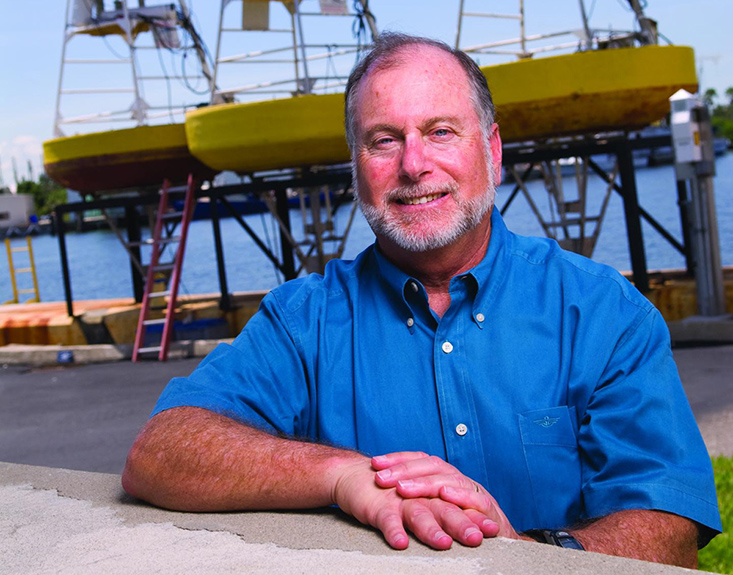Written By: Sean Beckwith, PhD student
ST. PETERSBURG, FL – “What is ecology?” asked Dr. Robert Weisberg, a professor at USF’s College of Marine Science. “… the study of life in its environment,” came an acceptable answer to this physical oceanographer who places great importance on interdisciplinary science. The key to answering many of the big questions about living organisms is to understand the forces at work in their everyday environment. For both the coastal and deep oceans, this begins with, what is the water doing?
The myriad of life forms and their interactions with each other are strongly influenced by large and small scale physical processes that can be found everywhere on earth. Colorful satellite imagery reveals where primary production, the base of the food chain, thrives in the ocean and where it does not. High productivity zones, whether along coastal margins, the equator or elsewhere, as well as the oceanic equivalent of deserts in the central portion of ocean basins, are all associated with physical processes such as ocean circulation that determine whether or not nutrients are coincident with light.
Ocean circulation physics also determine the interaction between the deep ocean and the continental shelf, which impacts the recruitment of gag grouper larvae, the instigation of red tides, and the spread of pollution through events such as the 2010 Deepwater Horizon oil spill or the 2017 releases of partially treated sewage by multiple municipalities in the Tampa Bay region.
Gag grouper spawn offshore and settle near shore. Juveniles arrive at their coastal nursery habitats via a near-bottom route (transported within the bottom Ekman layer). This transport is strongly influenced by the Loop Current, a large scale ocean current that flows clockwise through the Gulf of Mexico. Since the Loop Current varies from year to year, the recruitment of gag larvae is not always consistent.
Working alongside Dr. Weisberg, research associate Dr. Yonggang Liu utilized an extensive set of observations to demonstrate the importance of circulation and its implications for fisheries as well as for red tide occurrences. Interannual variations in Harmful Algal Blooms (HAB), like successful gag recruitments, result from variations in the Loop Current. Protracted Loop Current interactions near the Dry Tortugas set the entire west Florida continental shelf in a state of upwelling, which brings deeper ocean nutrients onto the shelf. With nutrient replete conditions, other faster growing phytoplankton such as diatoms can outcompete the red tide organism Karenia brevis, thus preventing a red tide.
To study aquatic organisms, it is equally as important to know the water properties as it is to know the organism. The movement of water, its temperature, as well as salinity and nutrients determined through interactions of the ocean, land and atmosphere all help to explain the location of everything from fish to the plankton that they feed on.
Specifically, the ocean circulation determines the position of the thermocline, the region where temperature changes rapidly with depth. Nutrients also change rapidly over a similar depth range as temperature. Most organisms in the ocean require a certain amount of light, warmth, and nutrients. And so, as Dr. Weisberg stated, “The ecology of the earth actually begins with the ocean circulation. This is what unites nutrients with light, fueling primary productivity and, after that, all higher trophic level interactions.”
Stay tuned for Part II of this interview, “A critique of storm preparedness and renewable energy.”
